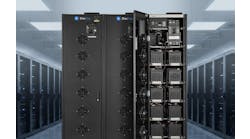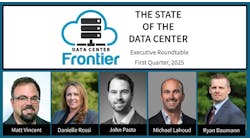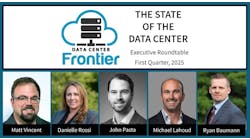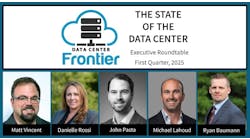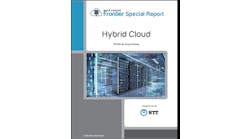The Data Center Frontier Executive Roundtable features insights from industry executives with lengthy experience in the data center industry.
Here’s a look at the Q1 2025 insights from Danielle Rossi, Data Center Strategic Sales Leader, Trane.
Danielle Rossi has 19-plus years in data center solution design and engineering for hyperscale, colocation, enterprise, edge, and government environments. In her current role, Danielle manages global mission critical cooling products and processes to provide a standardized deliverable for customers executing projects worldwide.
Power Infrastructure & Energy Resilience in 2025
Data Center Frontier: As power constraints intensify across key data center markets, how are industry leaders addressing energy security, backup power solutions, and the integration of alternative energy sources such as hydrogen, natural gas, and nuclear?
Danielle Rossi, Trane: From the thermal management perspective, aside from product and system efficiency, there are limited ways to address power limitations. However, we have recently seen increasing requests for thermal storage to assist with peak shaving power. This can be a useful option, particularly in areas where there is a significant difference in day/night cost per kWh. By utilizing chillers to create ice overnight and using that ice for cooling during the day, you can adjust your run hours to limit usage during high-cost power periods.
The Cooling Imperative: Managing High-Density AI Workloads
Data Center Frontier: With the rapid rise of AI-driven workloads pushing power densities beyond traditional limits, what new cooling technologies and efficiency strategies are being deployed to maintain operational stability and sustainability?
Danielle Rossi, Trane: With the increased densities required by AI comes the increased requirement of liquid cooling and its associated design demands. We have seen the influx of liquid cooling manufacturers and technologies in the market over the last few years, but most have been relatively siloed. There are many different types of liquid cooling technologies, and each can have different requirements for heat rejection. Moving forward, the water system of a data center (closed- or open-loop) needs to be designed holistically. Performing at peak efficiency is challenging without the water system being designed and optimized as one system from roof to rack. This may include multiple loop and heat rejection considerations and requires expert mechanical design customized for each installation. Earlier, cohesive vendor engagements in the full system design should become a more prevalent strategy to best approach these deployments.
Site Selection & Market Evolution in a Constrained Environment
Data Center Frontier: Given ongoing challenges in land acquisition, power availability, and local regulatory hurdles, how are data center operators refining their site selection strategies in Q1 2025? Which North American markets are emerging as the next hotspots for development?
Danielle Rossi, Trane: The name of the game is power. Some regions prioritize renewable power more than others, and regional regulations must also be considered. There’s no design standardization, and it’s challenging to convince data center operators, energy suppliers, and government decision-makers to come to the table for alignment. Customers are significantly diversifying their site locations to accommodate the necessary power requirements. In recent months, we have seen a large push to the Deep South with multiple projects in Louisiana and Mississippi. Traditionally, with the hurricane risk to those areas, we did not see many large data center builds. The availability of power, fiber, and land now positions this area as an emerging market. There have also been some site considerations in the northern Midwest, as it offers access to power and fiber with manageable costs but with an added focus on heat recovery options.
The Changing Economics of Data Center Development
Data Center Frontier: With rising construction costs, supply chain challenges, and shifting enterprise demands, how are data center providers, energy specialists, and real estate firms adapting their business models to sustain growth and profitability in 2025?
Danielle Rossi, Trane: Over the last few years, there has been a significant increase in collaboration and joint planning between customers and vendors. Most hyperscale and colocation companies are ordering items by the dozens or hundreds, requiring increases in manufacturing, which, in turn, increases subcomponent demand, which increases material demand. Supply chain backup plans now have secondary and tertiary plans to help avoid constraints. As a vendor in the data center ecosystem, many of our solutions are large and come with longer lead times. Open communication is a necessity. Customers are providing years of timeline, by quarter, to ensure manufacturing plans align with their growth and delivery dates. Sustaining growth and profitability comes down to alignment with trusted innovators who offer a holistic and transparent relationship and communication approach. All areas of the data center ecosystem and supply chain need advanced notification of changes so that plans to meet demand can adjust accordingly.

Matt Vincent
A B2B technology journalist and editor with more than two decades of experience, Matt Vincent is Editor in Chief of Data Center Frontier.

